#honoring ancestors
Explore tagged Tumblr posts
Text

#thevirginwitch#witchcraft#witch#witchblr#witchy#pagan#ancestor work#ancestors#ancestor veneration#veneration#honoring ancestors
21 notes
·
View notes
Text

This morning I rearranged my altar for All Soul’s Day/Day of the Dead, to include offerings for/reminders of some of my ancestors/where they’re from.
3 notes
·
View notes
Text
Ars Angelica: The Angelic Magician’s Handbook
For centuries, mystics, scholars, and seekers have turned to celestial forces for guidance, protection, and divine wisdom. Ars Angelica unveils the hidden traditions of angelic magic, exploring its foundations in medieval grimoires, Kabbalistic teachings, and esoteric philosophy. This book serves as both a historical study and a practical guide, revealing how sacred names, sigils, and celestial…
#Ancient Wisdom#cosmic wisdom#honoring ancestors#Meditation#Moonlit#Philosophy#sacred objects#spiritual growth#Transcendence#Wisdom
0 notes
Text
Ancestor offerings. ~coins~ 🪙
Usually left my families and friends of military personnel. The money is often collected to help with cemetery maintenance or caring for surviving vets. This version is practiced in the US and Canada. Some cemeteries would prefer you not leave coins so it’s a good idea to check first. (They can damage graves in left to long)
Pennys = visited grave stone to show respect
Nickel = attended boot camp together
Dime = served together
Quarter = you were present when the died.
Source
🌱🌱🌱🌱🌱🌱🌱
Ancestor offerings ~ stones~
For some, particularly for Jewish people. A pebble is found before leaving and placed on the grave traditionally with the left hand.
Source
Both sides f my family do this. Had no idea it was also a specific tradition for an actual ethnoreligion. It as just something we did because we didn’t have resources to get anything fancy.
Source for both entries
Goodchild, Clair. The Book of Ancestors, a Guide to Magi’s, Rituals, and Your Family History

0 notes
Text
youtube
1 note
·
View note
Text
Spiritual Practices: Honoring Your Ancestors
As a white, Western-thinking person, the idea of honoring my ancestors is a foreign concept. My first thought is, “Who the heck are my ancestors?” My family goes back a few generations and then…disappears. A DNA test shows a mix of English, German, Scottish, and Irish with a scattering of other white groups blended in. But the Bible talks a lot about the importance of ancestors. How do we find…

View On WordPress
#blogging#books#christian#Cindy L. Lee#faith#honoring ancestors#Jacci Turner#religion#spiritual formation#spiritual practices#spirituality#writing
1 note
·
View note
Text


Shiver - Junji Ito Selected Stories ("Honored Ancestors") // Junji Ito
401 notes
·
View notes
Text
Heads up! There is going to be a very long and detailed post about making sausages dropping in a few hours.
It's got a big red content warning and a readmore, so nothing is going to get gruesomely dropped on you, but make sure you add "butchery" or "cw butchery" to your tag filters to be extra safe if the idea of processing animal carcasses is upsetting to you!
It also has an image of sausage casings before they're scraped. I tried to whack the post with as many CWs as I can think of but I'd recommend "cw meat" or "cw organs" if you need them.
#I also kinda started infodumping about sausages in general#It's a lot more of a food post than a lore post#And that's because 1. I'm hungry and 2. I want to make a whole official warrior bites entry on clan sausages#Delving into how the sausages tend to be different between Clans because of their environments and preferences#The person who sent the ask seemed to be requesting technical info#So technical info they GOT#Funfact about me. One of my ancestors sold hot dogs for a living.#You all jest about silly American in the hamburger mine working hard for 1 rock and roll disk.#But I am from proud lineage of hotdogslingers. I have no need of rock and roll disk#I hot dog out of pride. For honor. A lone ranger.#''Gee Bones why do you like food so much'' my blood is hot dog water#Also I am not squeamish at all. Like. I'm chronically unsqueamish when it comes to meat and overestimate the comfort of other people#SO I try to make up for it with ample warnings like this#Since I got some new followers who may not be used to the Regularly Scheduled Strange Topics or how I do stuff.
134 notes
·
View notes
Text
youtube
I'm so obsessed with this video... Dan has the edgy teen genes...
#dan and phil#dnp#phan#daniel howell#amazingphil#dan howell#danisnotonfire#phil lester#Youtube#also thinking about his ketu first house#ketu first house often means that you are here to somehow honor your ancestors#and Dan's ancestors wanted him to be a gay emo boy
68 notes
·
View notes
Text

respectfully I need to climb him like a rope ladder and do him so good we both ascend into the clouds and never recover
#forever in a state of need for him that gets my feminist card revoked#i’m so HE IS JUST SO#he is EVERYTHING to me#the look on his face here is everything i dream of#so tender and approachable and vulnerable#yet with that inner strength that drives him and gives him such character#i feel like russell crowe poured every bit of his soul into maximus#there’s something so deeply human about him#something so deeply good and noble beyond the mere appearance of it#he’s a man who has fears and concerns and tendencies and blind spots and flaws#but also so motivated to do what’s right that all those other things are nearly forgotten#he loves his family his emperor his soldiers his home his ancestors and his honor#and he lives in a way so that he won’t disgrace any of them#and that constantly brings him into the spotlight because such a good man is so rare#i just!!! think he’s the best guy ever!#his face inspires me to write entire books of romantic poetry#i will write an epic of you my love#i will immortalize your goodness and strength#if he fixed this gaze on me i would be a puddle on the floor#that’s it jane is dead from an overload of handsomeness#obsessed with those big clear blue-green eyes and those little forehead crinkles and those wide shoulders#the face of a man who needs to be KISSED#and snuggled and caressed and loved on#i will!! i will love him if no one else will!#i will love him long after both our names are forgotten!#he’s so beloved by me he’s SO dear and precious to me#gladiator#maximus decimus meridius#gladiator 2000#russell crowe
34 notes
·
View notes
Text
Giratina's Temple and the Celestica Ruins
aka Giratina/platinum clan theory is back (also sorry for using mspaint lmao)
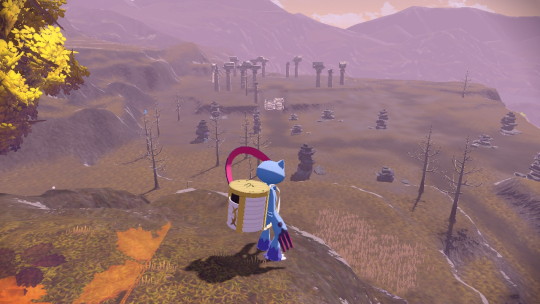
So we all know about the Shrouded Ruins, yeah?
(This is the only spoiler warning for Pokemon Legends: Arceus you're gonna get)
Spooky. Ever-cloaked in mists and mystery, surrounded by black-stoned cairns like graves and home to the giant Odd Keystone that once (?) housed 108 souls. Very ghost-centric.
Well what if I told you it was a temple?
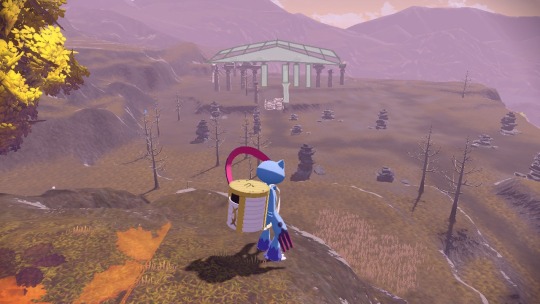
Greco-roman temples (and, problematic or otherwise the celestica are absolutely greco-roman coded) are constructed relatively uniformly, with an outer later of columns holding up the roof and an inner layer holding up an internal structure, providing additional support, ect.
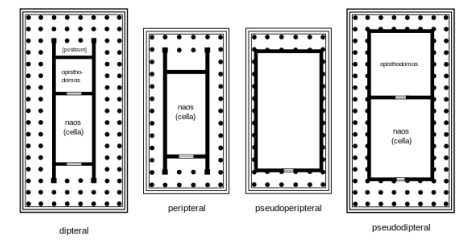
We have a perfect in-game model to project from, too, in the Temple of Sinnoh (pre-explosion). You can see that some of the smaller columns are sometimes decorative - likely they held up torches or, in the case of the two nearest the 'altar,' offerings

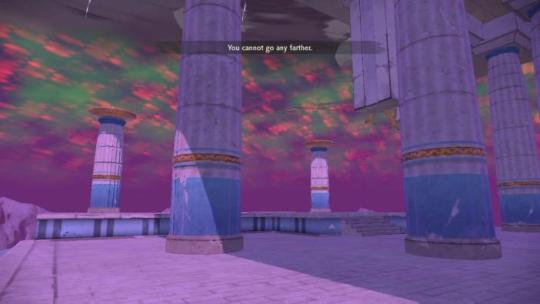
So knowing that style and having the remaining structures we do see in-game, we can approximate a lay out of what the building may have looked like.
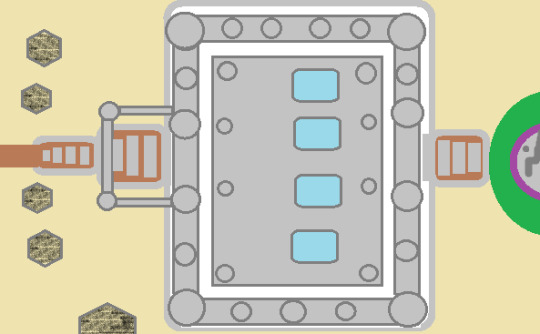

What makes this a temple, however, is more open to interpretation. My evidence to support that it is is actually the blue-tinged pedestals seen within the outline of the building - the place(s) of honor in any temple. Irl, the inner structure - the cella - was often fully-walled in, though sometimes this was constructed via wood and other materials that don't withstand time.

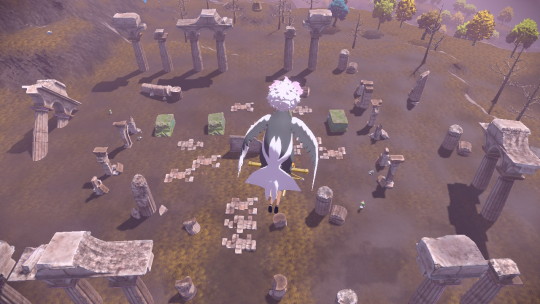
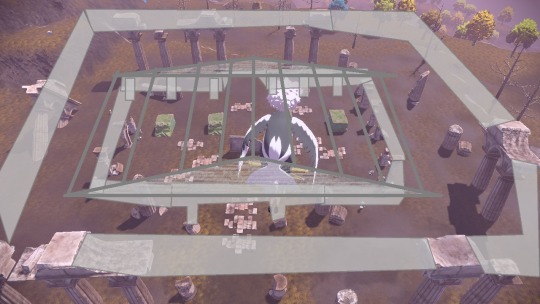
Now, ENORMOUS shout-out to pokemaniacchris and the incredible Crimson Mirelands Archeological Survey Project for a really detailed, in-character breakdown of the ruins structures throughout the mirelands. I can only assume the 'surveyors' hadn't reached Mt. Coronet yet in their explorations.
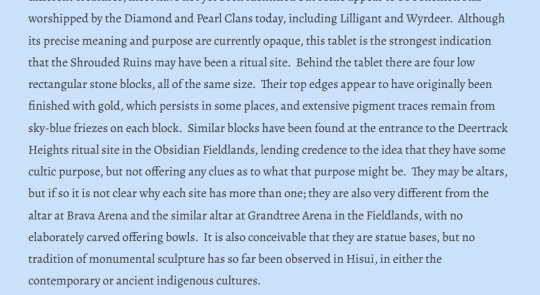
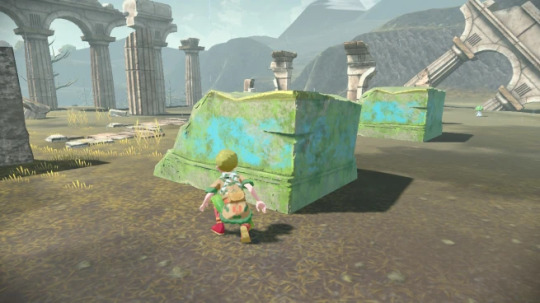
Pedestals like these (at least superficially similar) are found beneath dozens of statues around Mt. Coronet, including beneath Giratina, Palkia and Dialga in the Sacred Plaza area. Now, I know I'm supposed to be claiming that this is a temple to Giratina, but if we work on the assumption that the four pedestals corollate with Giratina, Palkia, Dialga, and Arceus, a new conclusion can, perhaps, be drawn:
That whoever built this temple saw all four of them on the same 'level' of power or -- and this is my hc taking over -- if the statues were placed in a certain orientation (see below) that they saw Arceus and Giratina on equal footing, with Dialga and Palkia one rank below.
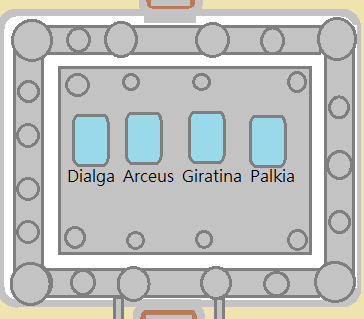
And there is, imo, more evidence to support this disruption of the 'creation trio' into two pairs on equal footing, found in the Celestica Ruins! So, among the structures there are two notable, circular buildings that the Greeks also utilized, called tholoi (plural). Irl, tholoi were a mix of secular-use and small-scale temples, and seeing as these two are small (maybe 10ft across inside?) I would maintain the claim that they're small temples.
And they align/mirror each other just as the statues of Palkia and Dialga do.

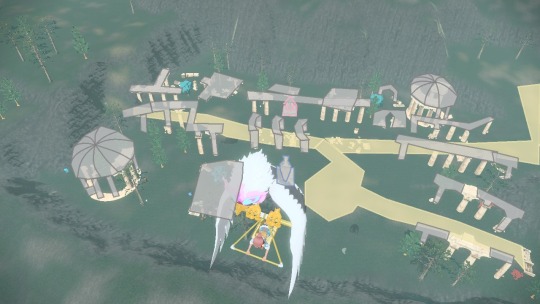
This part becomes pure conjecture, but I like to think the smaller structures in the ruins might be other small-scale temples for the various mythicals, honoring each much as the Greeks honored a pantheon.
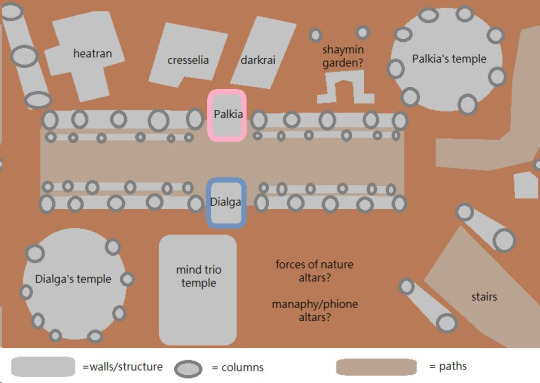
Lastly, the CMASP describes the "Gapejaw Bog Complex" as being potentially an entire agora all its own and I can't agree more. Such evidence would support the idea of there being two groups of Celestica (Note: Not the Clans.)
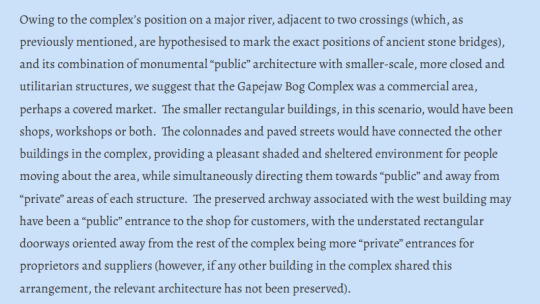
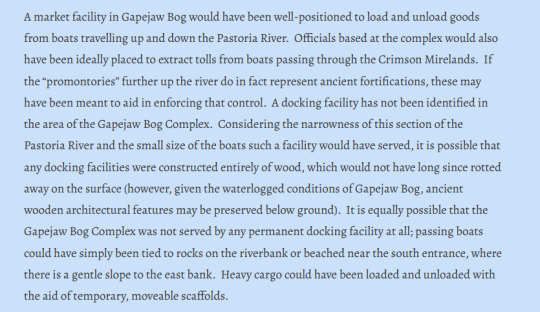
I actually found myself wondering if the mirelands weren't always quite so swampy, and instead flooded at some point in the past with the depressions around Gapejaw - left by housing foundations - filled in with swamp water.
At the end of the day, I think there's a lot of evidence that the Celestica revered Giratina as well as Arceus, Dialga and Palkia - at least early on. Something happened to cause this schism, and the Old Verses/Plate inscriptions point to an outburst of rage from Giratina -- though, in "pick a god (and pray)" I actually argue it was mispercieved on the part of the Celestica and this misperception is what caused Arceus to despair and withdraw.
Open to discussion!! fellow nerds please interact!!
#pla#pokemon legends arceus#celestica#celestica people#pokemon lore#giratina#arceus#volo#i also think there's a correlation between the ancient hero story's bolts of rage and alphas/hisuian pokemon aggression#specifically my internal timeline is that the schism predates everything purely on the secular/human level#arceus then empowered the noble pokemons' ancestors and fought the hero and believed humans were worthy of his blessing until the celestica#blamed giratina for the rage lightning and shattered the statue and maybe even drove the gira sect out#this dismayed arceus and it withdrew leaving the rage to fade but still linger and make hisui inhospitable#the celestica left (of their own volition imo) to seek out arceus and other knowledge and the clans came after#the clans saw only two statues (palkia and dialga) and picked sides but still upheld the tradition honoring the nobles#i imagine cogita being direct celestica (immortal or otherwise) and volo being gira clan descended or otherwise descended from the diaspora#the celestica then went to sinjoh/johto and so on and so forth#long post#reference
351 notes
·
View notes
Text
A Grandfather I Never Knew
James Elwood Burchfield Jr. passed away on April 30, 2021, at the age of 93. He lived a long life, filled with stories I’ll never get to hear firsthand, but it’s clear he made an impact on the world around him. He served in the Navy during World War II, retired from Wheeling Pittsburgh Steel, and was a proud Mason. Born in Steubenville, Ohio, in 1927, he saw decades of history unfold, and I can…

View On WordPress
#Burchfield family#discovering family roots#exploring family legacy#family bonds#family connections#family history blog#family relationships#finding identity#genealogy journey#grandfather tribute#Guilford Lake memories#honoring ancestors#Mason Pilgrim Lodge#Ohio family history#Personal growth#personal reflections#reflecting on loss#remembering loved ones#Storytelling#World War II veteran
0 notes
Text

Eh close enough
(Like or reblog if you wanna use!)
#“oh me oh my i can’t control my magic and my powerful ancestor/ relative hates me:( “#now where have i heard it before#meme#my meme#maya y los tres#maya and the three#mat3#rico the rooster wizard#dnd film#dnd honor among thieves#simon aumar
20 notes
·
View notes
Text

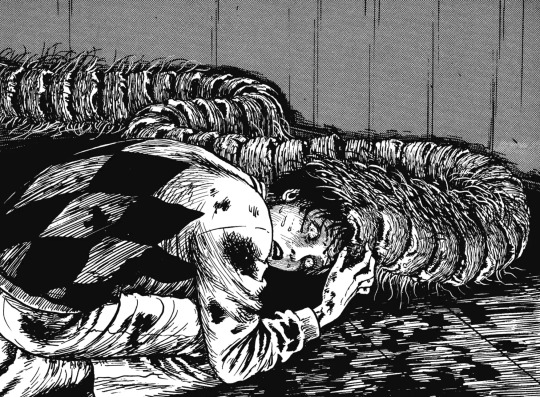
Shiver - Honored Ancestors | Junji Ito
29 notes
·
View notes
Text


#inuyasha#inukag#inuyasha gifs#anime cap#Inuyasha is my favorite noodle#Kagome likes the balls#They are idiots your honor#girl you better start speaking proper japanese or i'm gunna smack you so hard your honorable ancestors will feel dishonored#i have no idea what i'm doing#i should be writing#anime food
23 notes
·
View notes
Note
Will you be covering the Coronation?
You mean Princess Diana's Ex Husband's 'Compensating for Something' Ceremony?
No.
(Look, after seeing him & Camilla laugh during a throat singing performance, I lost any respect that I had for him (not that there was much to begin with))
#i will be pulling a joe biden and honoring my ancestors by not giving a fuck#while we're here good on harry & meghan for getting the fuck out of there#anyway give the jewels back to their original countries and sell the rest for reparations#asks and such
346 notes
·
View notes